Whether you are religious or not, Easter in Greece is an important period of custom and traditions so connected with our childhood and upbringing that following and protecting them is a matter of respect to our history and generations gone by.
Nowadays a lot of the customs have fainted, but still, especially the older women try to keep some of them alive. Preparations begin within the house with the changing over of clothes and carpets from winter to summer, thorough cleaning, the whitewashing of the outside walls and a lot of gardening to make the gardens look neat and colourful
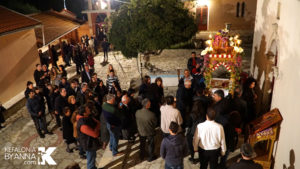
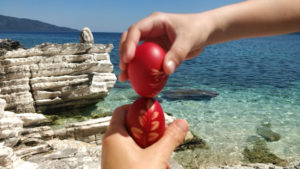
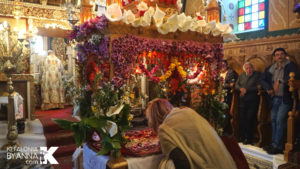
.
Fasting (together with a list of delicious local vegetarian dishes) is ending by Good Saturday after 40 days (from Apokreia) . During the Good Week (that includes a different church service every day with beautiful hymns and choir) the churches and later in the week, the “Epitafeios” are ornately decorated with seasonal, colorful flowers and herbs. In the home the preparation of Easter cookies, red dyed eggs and “tsoureki” (a brioche type bread) or the traditional Easter bread – this has the sign of the cross and red egg in the middle – begins.
In the morning of Good Saturday the old tradition of the smashing of pots is held in Argostoli – large ceramic pots are thrown from the bell tower and the houses – and before midnight, people gather in churches all over the island holding candles, which they light with the “Holy Light”. The Resurrection of Christ is celebrated at midnight with the ringing of the bells and in some cases loud fireworks. People greet each other with the phrase “Christos Anesti” and take the flame back to their houses where it is carefully kept.
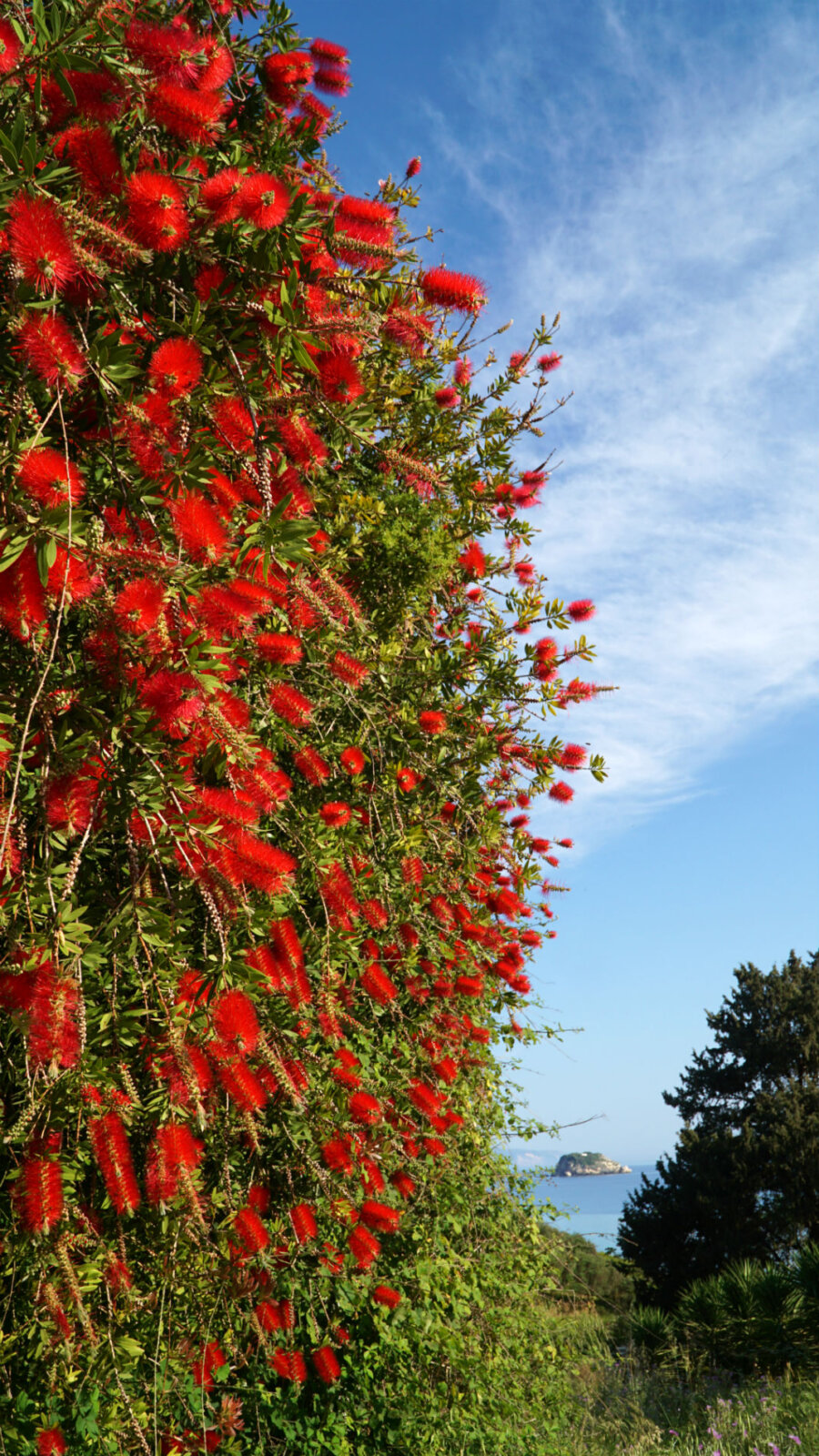
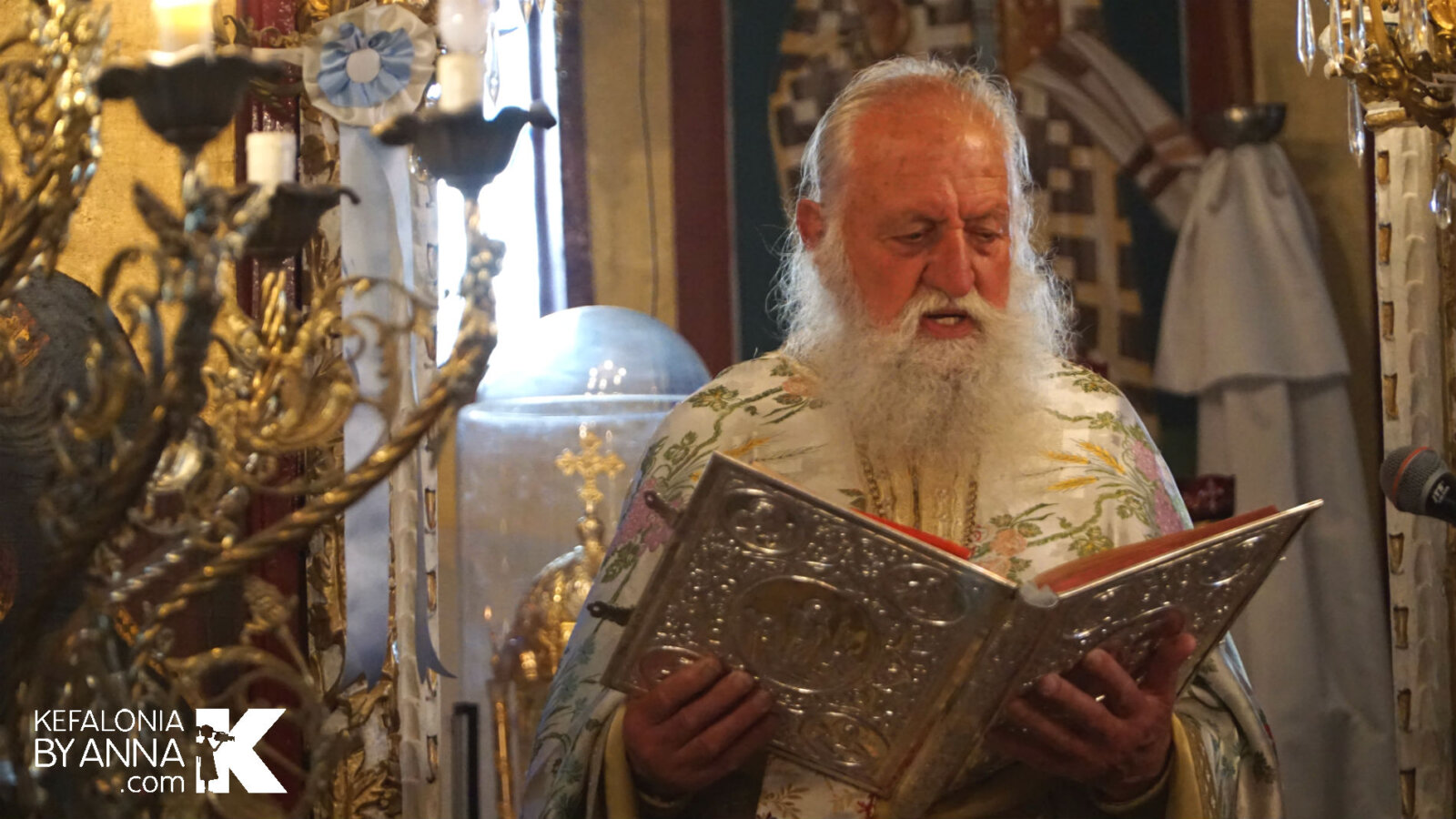
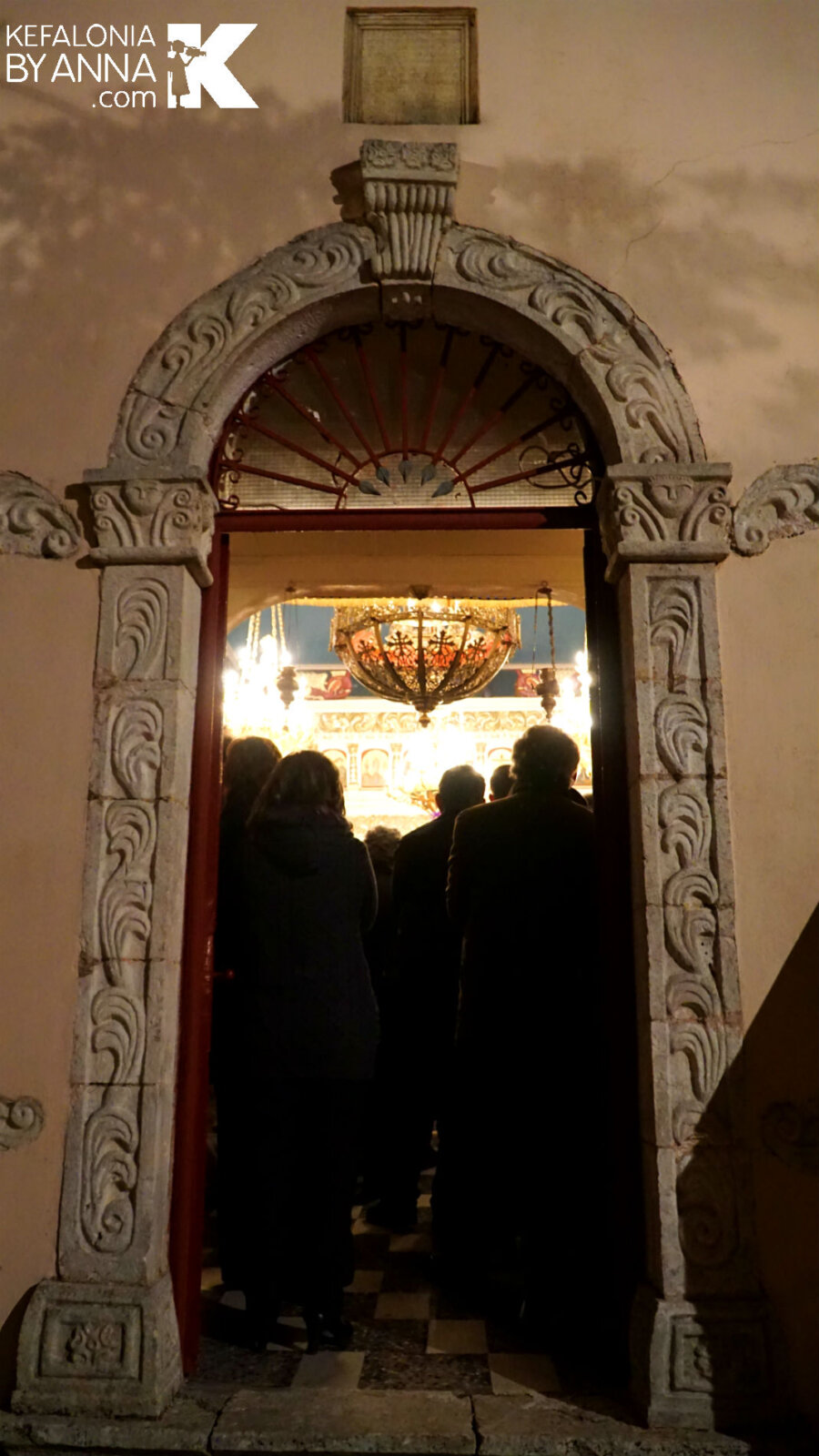
The family gathers around the festive table where they crack red eggs and feast on the traditional Easter soup of “magiritsa”. Spit roasted lamb is prepared for Easter lunch, together with “kokoretsi” (lamb offal). The smell of roasted meat can be sensed everywhere. The experience of a traditional Easter can be an overwhelming experience for both locals and visitors alike.
Easter is associated with the beginning of spring time, when nature blossoms, the sky has the best color of the year, and the days are getting longer. It’s a beautiful time of year!

